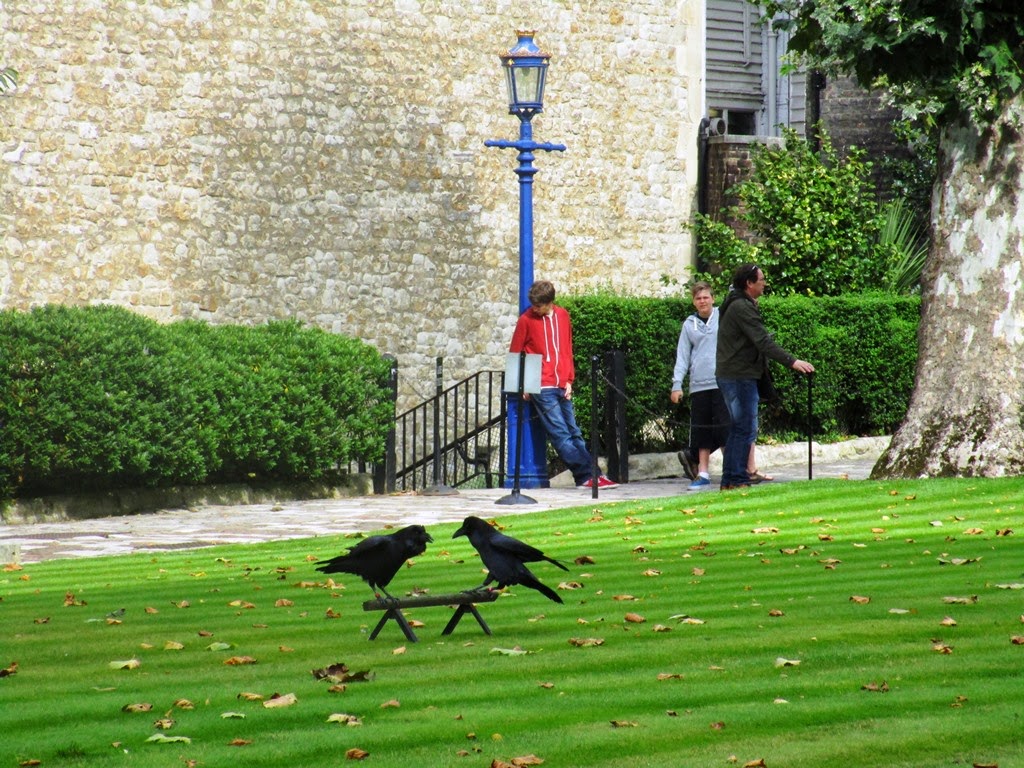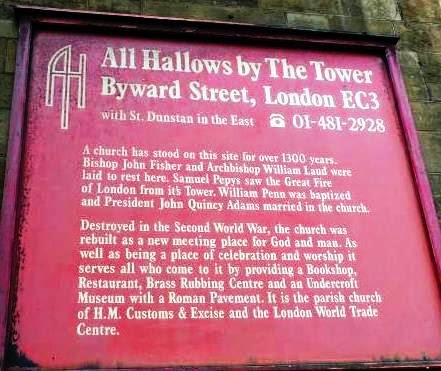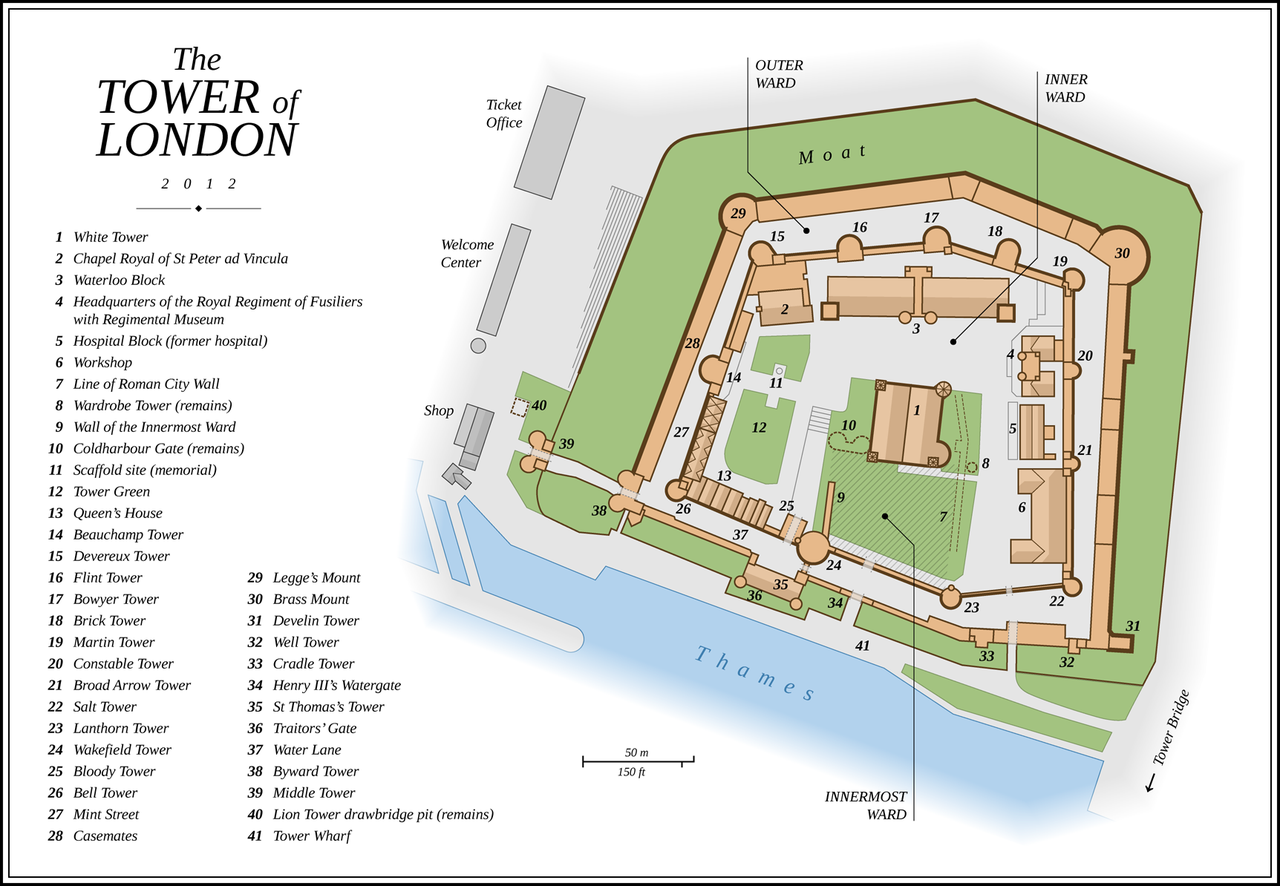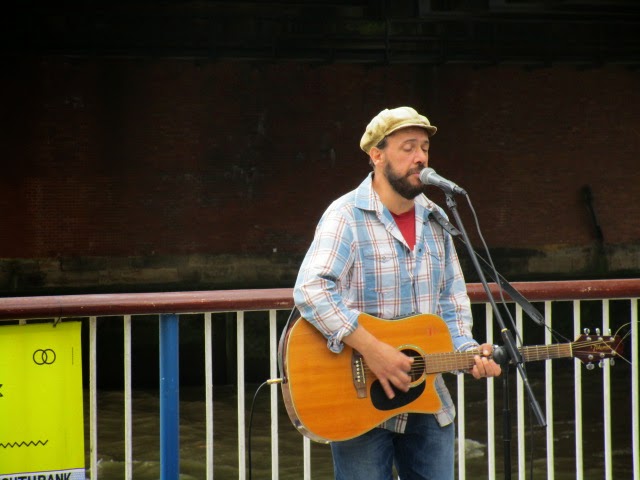There are underlined and highlighted links throughout the blog and with the photo captions. Click the links to learn more about the places that we saw and visited.
London, August 27, 2014, Wednesday
Sunshine! Beautiful day to be in London. We walked to Bayswater to find Lancaster Gate but miscalculated a bit and ended up catching the tube at Marble Arch. People in London were friendly and helpful. While we were looking at our map and trying to figure out which way to go a young woman asked if we needed help. She said we were closer
to Marble Arch than Lancaster and we could walk with her as she was
headed that way. She was from Saudi Arabia and said she comes to London
every year. As we walked Hyde Park was across Bayswater. It is a huge park. Where ever we went in London it always seemed to be nearby. In a few minutes we came to the busy intersection where
Bayswater, Edgeware Road and Oxford Street come together and crossed over to Marble Arch underground station. We took the tube to Tower Hill underground station.
As you leave the underground station you go under a
busy road and the stairs lead to a walkway that goes around the edge of the tower. As you walk there is a sea of ceramic poppies. The art exhibit, "Blood Swept Lands and Seas of Red at the
Tower of London," commemorates the 100th anniversary of Britain's entry into World War I. Each poppy represents a British military fatality during the war.
At the end of the walkway we entered a large plaza, with ticket booths, gift shop and snack bars. We
already had our tickets so we
went straight to the entrance gate. The Tower of London is almost one thousand years old. It has been a palace, a fortress and a prison. The Tower has several buildings and is surrounded by a moat, two defensive walls
 |
| Entrance to the Tower of London |
|
|
|
Near the entrance is the Traitor's Gate, a water gate entrance to the tower. It was used to bring prisoners in that arrived via the River Thames.
 |
| Traitor's Gate |
 |
| The White Bear belonged to King Henry VIII |
The Bloody Tower got its name in the 16th century. It is believed to be where two princes were killed in 1483. Edward IV’s brother, Richard Duke of Gloucester (later Richard III)
was declared Lord Protector because Edward IV’s 12-year-old son Edward V
was too young to rule. Accounts say that Edward V and his nine-year-old brother, Richard,
were held prisoners by their uncle in the tower. The young brothers
mysteriously disappeared, and the uncle was declared king. Bones thought
to belong to the brothers were found in the tower in 1674 when a
building was demolished.
 |
| Inside the Bloody Tower - Sir Walter Raleigh was imprisoned here. | | |
|
Legend
says that the kingdom and the Tower will fall if the six resident
ravens ever leave the fortress. It was Charles II, according to the
stories, who first insisted that the ravens of the Tower should be
protected. - See more at:
http://www.hrp.org.uk/TowerOfLondon/stories/theravens#sthash.vN3tcF4E.dpuf
Legend
says that the kingdom and the Tower will fall if the six resident
ravens ever leave the fortress. It was Charles II, according to the
stories, who first insisted that the ravens of the Tower should be
protected. - See more at:
http://www.hrp.org.uk/TowerOfLondon/stories/theravens#sthash.vN3tcF4E.dpuf
Legend says that the kingdom and Tower will fall if the Ravens leave. It
was Charles II, according to the stories, who first insisted that the ravens of
the Tower should be protected.
Legend
says that the kingdom and the Tower will fall if the six resident
ravens ever leave the fortress. It was Charles II, according to the
stories, who first insisted that the ravens of the Tower should be
protected. - See more at:
http://www.hrp.org.uk/TowerOfLondon/stories/theravens#sthash.vN3tcF4E.dpuf
Legend
says that the kingdom and the Tower will fall if the six resident
ravens ever leave the fortress. It was Charles II, according to the
stories, who first insisted that the ravens of the Tower should be
protected. - See more at:
http://www.hrp.org.uk/TowerOfLondon/stories/theravens#sthash.vN3tcF4E.dpuf
 |
| Ravens on the Tower Green |
 |
| Tower Green |
 |
| Tower Green |
The Beauchamp Tower was used to house prisoners and was named for the first prisoner held here,
Thomas Beauchamp, Earl of Warwick. The walls in the tower, contain ancient graffiti, left behind by prisoners. Many were religious or political prisioners. One could spend hours, literally reading the writing on the wall.
 |
I hope in the end to deserve that I would have. Men : Novem
: a. 1573.
Hugh Longworthe
|
 |
| Thomas
Rooper was imprisoned in the Tower of London for a religious offense in 1570. |
 |
| Martin Tower Where The Crown Jewels are Kept |
 |
| Entrance to The Crown Jewels exhibit. |
 |
| Debie and a Beefeater Guard at the Tower of London |
 |
| Housing for the Beefeaters at Tower of London |
 |
Ancient Roman Wall
 |
Roman Wall
The White Tower is one of the
most famous castle keeps in the world. It was built, to awe, subdue and terrify
Londoners and to deter foreign invaders. It’s an iconic symbol of London and
Britain.
Along with the rest of the Tower
complex, the White Tower is one of the most important historic buildings in the
world. It’s part of a World Heritage Site and is an example of Norman
Architecture. Inside is a unique Romanesque Chapel, the beautiful
11th-century Chapel of St John the Evangelist.
|
|
The
White Tower is one of the most famous castle keeps in the world. It was
built, to awe, subdue and terrify Londoners and to deter foreign
invaders. It’s an iconic symbol of London and Britain.
 |
| Add caption |
 |
| Add caption |
Along with the rest of the Tower complex, the White Tower is one of
the most important historic buildings in the world. It’s part of a World
Heritage Site and is an example of Norman Architecture. Inside is a
unique Romanesque Chapel, the beautiful 11th-century Chapel of St John
the Evangelist.
- See more at: http://www.hrp.org.uk/TowerOfLondon/stories/WhiteTower#sthash.np5E2Ght.dpuf
 |
White Tower at Tower of London
We left the tower through a different gate from that which we entered, to a cobblestone walkway, along the Thames. We had wonderful views of the Tower of London Bridge and of the busy river, full of boats and barges.
We walked to the Tower Pier and then up Lower Thames Street and around to Water Lane. We came back to Petty Wales and as we traveled back towards Tower Hill we passed the Tower Vaults, which has mostly underground shops and cafes, including a KFC. The vaults were once the cellars of the Mazawattee Tea Warehouse, which was destroyed during World War II bombings.
|
We came to a church, All Hallows by The Tower also called All Hallows Barking. A sign said the church, the oldest in the City of London, was open to the public, for tours.
Inside we learned that the building had been badly damaged during World War II and later rebuilt. A seventh century Saxon Arch, from the original building, that survives within, makes this the oldest church in the City of London.
 |
| All Hallows By The Tower |
Many well know persons were associated with the church. William Penn, founder of Pennsylvania, was baptized at All Hallows in 1644. Samuel Pepys noted in a
diary entry, concerning the Great Fire of London, September 5, 1666, "I up to the top of Barking steeple, and there saw the saddest sight of
desolation that I ever saw; every where great fires, oyle-cellars, and
brimstone, and other things burning." John Quincy Adams was married in the church in 1797. Because of the close proximity to The Tower, the headless bodies of many prisoners who were executed there, were brought to All Hallows.
 |
| All Hallows By The Tower |
 |
| All Hallows By The Tower |
 |
| William Penn. |
 |
| All Hallows By The Tower |
We were tired and headed back to the hotel after we ate.
London, August 28, 2014, Thursday
 |
| St. Paul's Cathedral - courtesy of TravLang |
This morning we are going to St.
Paul's Cathedral. The sun is shining and it is a beautiful day. We went down Craven Terrace to Lancaster Gate, and managed to get there with no wrong turns. We took the Central line all the way to St. Paul's Underground Station. We walked a few short blocks to the Cathedral.
A cathedral dedicated to St. Paul, has stood at the highest point of London for more than 1400 years. The present St. Paul's Cathedral was designed by the British architect Christopher Wren to replace the building lost in the Great Fire of London. The cathedral is at least the fourth building to be on the site. The construction began in 1675 and continued until 1710. Services were first held in 1697.
No photos are allowed inside the Cathedral so all interior shots have been borrowed. You can see the original photo by clicking on the photo caption.
The interior of the Cathedral was beautiful. We each had an audio guide and sort of explored on our own as we listened.
 |
| St. Paul's South Organ - Photo by David Iliff. License: CC-BY-SA 3.0 |
Every church we visited had a crypt but none of the others was as magnificent as the crypt at St. Paul's. It is the largest in Europe and can be booked for receptions and dinners and will accommodate up to 350 guests.
And then comes the stairs. There are 528 steps if you go to the very top. We decided that we could surely climb the first phase to the Whispering Gallery, only 257 steps. It turned out not to be so bad. The steps were wide and easy to climb. I stopped a couple of times on the way up but I think Ann could have made it just fine. When we got to the top we sat for awhile and then walked around the gallery before going further.
The next goal was the Stone Gallery, an additional 119 steps. These were not so easy to climb and already tired we took our time about going up. We did make it and the reward came in beautiful views of London, in every direction.
 |
| High above London-Stone Gallery at St. Paul's. |
Here we could make photos and I will share some of those. We really wanted to go to the top and started up. We discovered that the remaining 152 steps were on a spiral staircase and the steps were small and narrow. We only went a short distance and changed our minds and came back down.
 |
| View from the Stone Gallery - St. Paul's Cathedral |
 |
| View from the Stone Gallery - St. Paul's Cathedral |
 |
| View from the Stone Gallery - St. Paul's Cathedral |
 |
| View from the Stone Gallery - St. Paul's Cathedral |
 |
| View from the Stone Gallery - St. Paul's Cathedral |
 |
| View from the Stone Gallery - St. Paul's Cathedral |
 |
| View from the Stone Gallery - St. Paul's Cathedral |
 |
| View from the Stone Gallery - St. Paul's Cathedral | | | |
We left St. Paul's and tired to find a spot to get a good shot of the cathedral from the outside. With my little camera that was not to be. I did the best I could.
I also borrowed a nice one from Insight Guides
Now we set out to find the Museum of London. It was in the neighborhood and we found it in a few minutes. We were tired and thirsty and stopped in the cage at the museum for some juice. There was no admission to the museum. We did buy a guide/map for one pound. The museum was set up for families and children to explore with lots of hands on exhibits, providing a look at London through the years. The tour starts in prehistoric times and moves to the Roman occupation, and then continues on up the calendar to modern times.
 |
| Add caption |
 |
| Wooden Indian - London Style |
Replicas of Victorian Shops, give a view of life from the lat 19th century.
 |
| Tailor's Shop |
 |
| Touring car |
|
|
|
London, August 29, 2014, Friday
It is 4:36 am and we are getting read to take the train to Paris.We are taking a taxi to St. Pancras Station and we will meet our tour guide there to get our train tickets and tour information. A different guide will meet us when we get to Paris. Paris deserves a page of its own. Click here.
London, August 30, 2014, Saturday
Left the hotel about 9:30 this morning.
We walked about two miles, along Bayswater to Notting Hill and then to the Portobello Road Market. It was wonderful. The colors and the crowds and the smell of food cooking was like being at a fair. This happens every Saturday. Wish we had something like this close to home. The photos will speak for themselves and won't need much explanation.
Portobello Road by Cat Stevens
Listen while you read the blog by clicking
here. It will open in a new window.
 |
| On our way to Portobello Market |


We were back at Trafalgar Square with the giant blue rooster.
We could see Big Ben and across the river was the London Eye.
 |
| Big Ben |
 |
| London Eye |
We walked towards the Hungerford Bridge and cross over the
Thames. The walk along the river was interesting and fun. People was
everywhere. There was a carnival sideshow. Street musicians were
performing, singing an playing instruments. There were carnival type
rides and a board detailing the history of Coney Island. There was a
magician pulling quarters out of children's ears and there were several
young men doing stunts on bicycles.
The river views were amazing.
We walked around the streets a bit and walked to the Park Plaza Hotel near Westminster Bridge. To the side of the hotel on York Street was an art piece by Nasser Azam, a sculpture called 'The Dance.' Azam was the artist in residence at the County Gallery until it closed.
 |
| The Dance |
We walked back to the County Hall and crossed the Westminster Bridge. Walking along the river on that side provided good views of County Hall and the London Eye.
We had a long day so we went back to the Charing Cross underground station and started back to Paddington. We ate at Bizzarro' s Italian our first night here.
It was really good so we decided to go back. The food was great, we made a good choice.






























































































.JPG)

.JPG)









































.JPG)













No comments:
Post a Comment